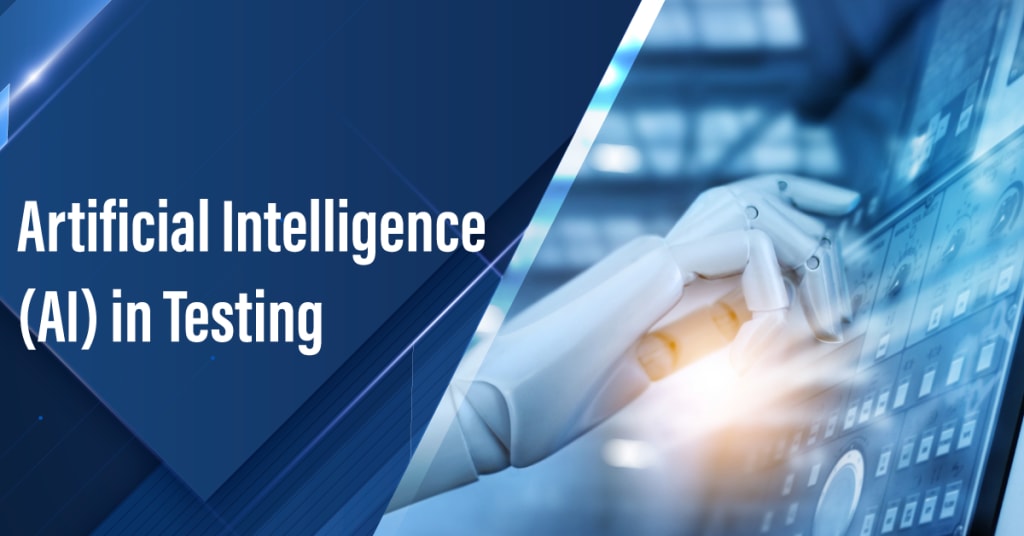AI in Testing: Do You Need It? This Article will Help You Decide!
What Everyone Must Know about AI in Testing

Artificial Intelligence is the buzzword that we frequently keep hearing. Its widespread popularity and influence can be understood from the way industries adopting AI in their organization. Whether it’s Healthcare, Automobile, Banking & Financial Services, or Airlines, many industries have started adopting AI.
Artificial Intelligence has not only impacted industries, it has also empowered the SDLC for faster development and deployment. The combination of automation testing and AI has numerous advantages.
Accelerates Timelines
Software testing needs a notable amount of time to validate the quality of an application. As manual testing takes more time, automation testing supports in handling repetitive tasks, with a greater focus on the new implementation to catch the defects faster. Similarly, in addition to automation testing, AI can support automation by creating faster tests (test generators), handling changes (Self-healing tests), and reducing the number of lines of code.
Increases Test Coverage
Automation testing handles repetitive tasks. But with the increase in the number of application technology, test automation tools have difficulty in adapting to those changes. As a result, the test coverage using automation has been moderate for a long time. Due to AI-Powered visual recognition, automation tools are now capable of handling the application, which in turn increases the test coverage.
Improves Accuracy
The quality of the product is ensured through testing. And the accuracy of testing is ensured by QA. But to err is human because even an experienced tester can commit mistakes while performing a repetitive task. Automation testing prevents those mistakes, and an increase in the volume of data for repetitive tasks never impacts the quality of the test. AI-generated data supports creating accurate data and reduces time.
AI and testing have come closer than one can imagine. The implementation of the new features in the existing automation tools or the evolution of new automation tools with AI features are its best proof.
- Tricentis – AI Engine NEO
- SmartBear – ReadyAPI - AI Driven Test Generation
- SmartBear – TestComplete - Hybrid Object Recognition Engine
- Parasoft – Smart Generator
- Eggplant
- Percy
- Applitools
- Mabl
- Functionize
- ReportPortal.io
- Healenium
Does Artificial Intelligence (AI) Replace Traditional QA Testers?
A lot of thinking persists as to whether AI will replace the QA testers' job. However, that’s not the case. In fact, AI will never replace the role of a tester. Testers will be able to test better with the help of AI-powered tools.
There are few common things between traditional testing and AI,
Traditional Testing:
- Prepare Test Cases
- Prepare Test Data
- Test Execution
AI-Based Software Testing:
- Prepare Test Data
- Analyze and Clean the Test Data
- Train the Test Data by Creating AI Models by Running the Regression Suit
Key Areas of AI in Testing where Traditional QA Testers can work
Regression Optimization:
- Modelling the Regression Suit
- Solutions for:
Test Suit Impact for CR Patchwork Upgrade on the applications
- Automated prioritization of test cases/scripts-based on machine learning
Defect Analytics:
- AI-based sentiment analytics to find the requirement/positive and negative scenarios for better decision making
- Real-Time Dashboard for displaying the current status of the Bug
Defect prediction Code coverage Response time Scalability prediction
Smart Automation Testing:
- On every release, find the change detection in the object parameters across the scripts
- Self-healing scripts, when there are new CR/Upgrade/Patches
- The dashboard on the Requirement Coverage system
Performance Testing:
- Workload modelling and Response Times Analysis by ML Modelling
- Agent-based System Modelling will be handled for Performance Testing
Conclusion:
Being a QA, either we can use AI for testing, or we can start testing AI. For both of these, we need to understand AI. Let’s explore AI.
About the Author
I am a seasoned technology writer currently working with Nous Infosystems. I prefer attention to emerging technologies and enjoy exploring and writing about Information Technology topics.
About the Creator
Nous Infosystems
Nous Infosystems is a global information technology firm providing software solutions & services across a broad spectrum of industries. Nous delivers quality technology outsourcing solutions.
For more info: https://www.nousinfosystems.com/






Comments
There are no comments for this story
Be the first to respond and start the conversation.